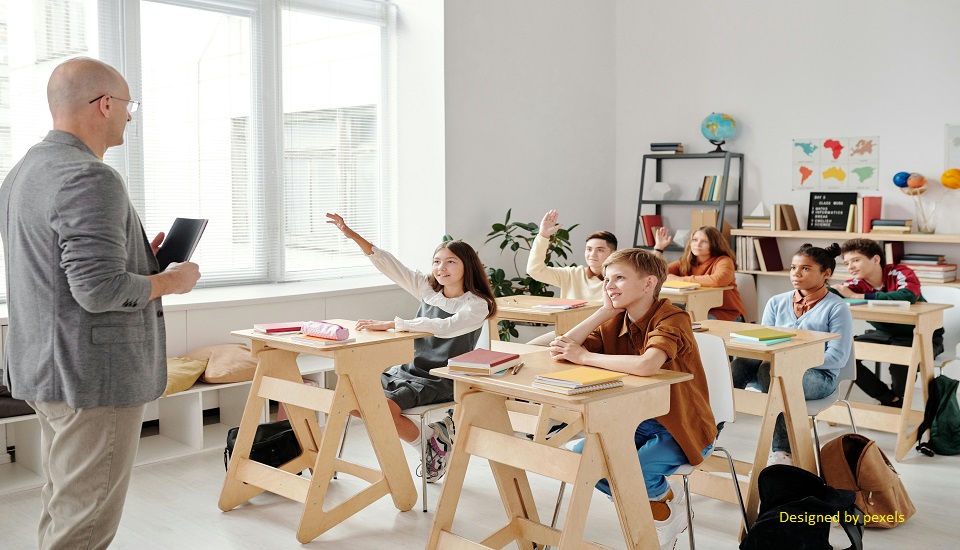Optimizing Time In The Classroom With Chronos And Kairos
3rd February 2025

Time is a fundamental aspect of education, shaping the way lessons are planned, delivered, and experienced by students. However, not all time is the same. In the realm of ancient Greek philosophy, time is understood through two different concepts: Chronos and Kairos. While Chronos refers to sequential, measurable time, Kairos represents the right or opportune moment for something to happen. Understanding these distinctions can profoundly impact teaching strategies, classroom management, and student engagement. This blog will explore the difference between Chronos and Kairos in the classroom and how teachers can balance both to create an effective learning environment.
Understanding Chronos: The Structured Time
The term Chronos originates from Greek and represents chronological, linear time. It is the time we measure in hours, minutes, and seconds—the time that dictates schedules, routines, and deadlines.
In an educational setting, Chronos governs:
- School schedules: Classes start and end at specific times, ensuring order and structure.
- Lesson planning: Teachers allocate time for lectures, discussions, and activities to fit within a designated period.
- Assessments and deadlines: Exams, assignments, and projects follow strict timelines to assess progress systematically.
- Pacing guides and curricula: Education systems structure courses over weeks, months, and years to ensure coverage of required materials.
A classroom governed entirely by Chronos can feel rigid, predictable, and efficient. It is necessary for maintaining structure and ensuring that students cover the required syllabus. However, an overemphasis on Chronos can sometimes stifle creativity, spontaneity, and deep learning.
Understanding Kairos: The Opportune Moment
Unlike Chronos, Kairos refers to qualitative time—the perfect moment to act, learn, or make a meaningful connection. In the classroom, Kairos moments arise when students are deeply engaged, asking questions, or experiencing breakthroughs in their understanding. These moments often occur unexpectedly and may require teachers to deviate from structured plans.
Examples of Kairos in education include:
- A spontaneous discussion: A student asks a thought-provoking question that leads to a deeper exploration of a topic.
- An emotional connection: A story, video, or personal experience resonates with students, making the lesson more meaningful.
- A teachable moment: A real-world event or classroom situation presents an opportunity to illustrate an important lesson.
- Creative insights: A student has an epiphany, and the teacher allows time for exploration and discussion rather than moving on too quickly.
Unlike Chronos, which demands adherence to schedules, Kairos requires flexibility, attentiveness, and an openness to letting learning unfold naturally.
Balancing Chronos and Kairos in the Classroom
While both concepts of time serve important functions, an effective teacher must balance Chronos and Kairos to foster both structure and meaningful learning.
Here are some strategies to integrate both effectively:
1. Create a Flexible Schedule
While lesson plans and schedules should follow Chronos to ensure curriculum completion, they should also leave room for Kairos moments. Buffer time between activities allows for discussions, questions, and deeper exploration of topics without feeling rushed.
2. Recognize and Seize Kairos Moments
Teachers should develop a keen sense of when a Kairos moment arises—when students are particularly engaged, curious, or ready to absorb knowledge in a meaningful way. Being adaptable and allowing the lesson to shift can make learning more impactful.
3. Encourage Student-Led Learning
Allowing students to drive discussions and explore topics of interest fosters a Kairos-friendly environment. Inquiry-based learning and project-based activities encourage deeper engagement beyond rigid timelines.
4. Use Storytelling and Real-World Connections
Lessons tied to personal experiences, storytelling, or current events often create Kairos moments where students connect emotionally and intellectually with the subject matter.
5. Incorporate Reflection Time
Allowing students time to reflect on what they’ve learned encourages deeper processing of knowledge. Instead of rushing through content, a well-placed pause can be a valuable Kairos moment where insights emerge.
6. Differentiate Instruction
Not all students learn at the same pace. By balancing structured instruction (Chronos) with individualized support and flexibility (Kairos), educators can cater to diverse learning needs.
7. Encourage Mindfulness and Presence
Mindfulness techniques, such as deep breathing or brief moments of silence, help students become more present in the moment, making them more receptive to Kairos learning experiences.
The Risks of Overemphasizing One Over the Other
Here are a few challenges that might occur when you are dealing with these concepts:
1. When Chronos Dominates
- Lessons become rigid, reducing opportunities for deep, meaningful engagement.
- Teachers feel pressured to "cover" material rather than ensure true understanding.
- Students may experience burnout or disengagement due to the relentless pace of structured learning.
2. When Kairos Dominates
- Without structure, lessons can become unfocused, making it difficult to complete required coursework.
- Students may lack the discipline to adhere to deadlines and schedules, which are necessary for real-world preparedness.
- Educators may struggle with time management, leading to unfinished lessons or missed objectives.
Bottom Line
In an ideal classroom, Chronos and Kairos coexist harmoniously. Teachers who have pursued Online Educational Administration and Management Courses in Singapore, recognize the importance of both and can create an environment where students thrive—not just by meeting academic expectations but by engaging in moments of true insight and growth. By mastering the balance between these two forms of time, educators can transform classrooms into spaces of both efficiency and inspiration.
We believe education should be accessible to everyone. That's why we don't charge for our blogs. Find the right course that will help you in your career with us, contact us at - 1800–212–6400. You can mail us at act@asiancollegeofteachers.com.
Written By : Sanjana










